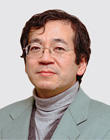The role of universities towards SDGs
Toshikazu Kato
Professor, Faculty of Science and Engineering, Chuo University
Research Interests: Kansei Engineering, Human Interface, and Kansei Robotics

The Sustainable Development Goals (SDGs) were adopted at the 2015 United Nations Summit. Interest in the SDGs is increasing rapidly both in Japan and overseas as issues and objectives for all countries in the world, including developed countries. By focusing on universities as centers for creating knowledge and examining research activities by researchers of Chuo University, this special feature explores the role which must be fulfilled by universities in order to achieve the SDGs by 2030.
This installment is written by Professor Toshikazu Kato (Faculty of Science and Engineering), Director of the Research Promotion Office at Chuo University. Professor Kato examines the feature theme of the role of universities in achieving SDGs while introducing examples of overseas initiatives.
1. What are SDGs?
The Sustainable Development Goals (SDGs) are action goals aimed at ending poverty, protecting the planet, and enabling everyone -leaving no one behind-- to enjoy peace and wealth. The 17 goals (Figure 1) and 169 targets (specific issues) have been set as requirements for human beings to continue living on the earth (United Nations General Assembly, September 2015). The SDGs are universal goals for both developing nations and advanced nations. As such, Japan is actively working on the SDGs.[1][2][3]
Chuo University is a founding member of the United Nations Academic Impact (UNAI). This framework aims to form partnerships between the world's institutions of higher education and the UN, and to provide mechanisms through which educational institutions can commit to the tasks and activities entrusted to the UN. Since 2010, Chuo University has served as a hub of information dissemination and information exchange in Japan. Consequently, I developed an interest in the process of formulating the SDGs. I have been cooperating in public relations activities for the formulated SDGs and have been working to incorporate the purpose of the SDGs into university initiatives.
In this article, I will discuss the essential roles of universities towards SDGs, while also introducing my experiences in working with SDGs.
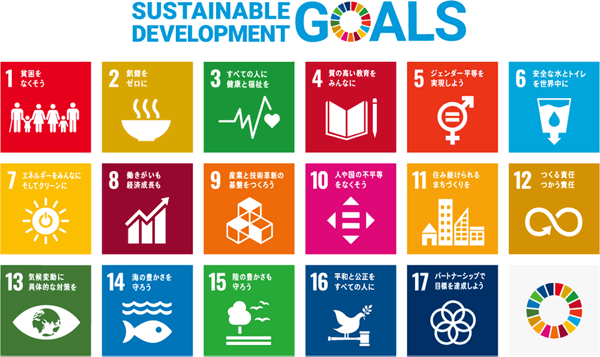
Figure 1 17 Goals of the SDGs
Goal 1: No Poverty
Goal 2: Zero Hunger
Goal 3: Good Health and Well-being
Goal 4: Quality Education
Goal 5: Gender Equality
Goal 6: Clean Water and Sanitation
Goal 7: Affordable and Clean Energy
Goal 8: Job Satisfaction and Economic Growth
Goal 9: Industry, Innovation and Infrastructure
Goal 10: Reduced Inequalities
Goal 11: Sustainable Cities and Communities
Goal 12: Responsible Consumption and Production
Goal 13: Climate Action
Goal 14: Protection of Ocean
Goal 15: Protection of Land
Goal 16: Peace, Justice and Strong Institutions
Goal 17: Partnerships for the Goals
2. Role as a center for creating knowledge
The important role of a university is to lead society towards the next area and to create knowledge as the foundation of the future. What kind of knowledge is necessary to achieve the SDGs? How can that knowledge be created through research? The goals and targets which require action seem to be quite clear when viewing the 17 goals of the SDGs (more specifically, the 169 targets) from the viewpoint of a scientist like the author. However, these goals are actually difficult.
Since the time of Descartes, scientists have grown accustomed to using a reduction methodology. Specifically, scientists seek to solve problems by breaking theme down into their unique elements and then combining the solutions to those elements. This methodology is extremely powerful, and it has created our civilized society on the basis of scientific technology. However, it can be said that the accumulation of extensive research into a specialized field (constricting research when the degree of specialization is too high) has created the problems which now require SDGs.
SDGs are characterized by the fact that each goal and target are mutually related. The only way to find a solution and achieve a goal is to go beyond the boundaries of individual disciplines and specialized fields. It is essential to form partnerships between multiple fields. (This partnership has a broad scope which encompasses natural sciences, engineering, medicine, law, economics, culture, arts, etc.) This research methodology is called inter-disciplinary study or trans-disciplinary study.
The fashion brand Salvatore Ferragamo, which is headquartered in Florence, Italy, responded to the solution to SDGs by holding a special exhibition entitled Sustainable Thinking at its museum nearby. The exhibition was an attempt to achieve SDGs on a global scale through the development and introduction of new technologies and to achieve sustainability as a corporate brand in future society (Figure 2).
This exhibition demonstrated the possibility of creating products which possess outstanding artistic appeal and are deeply admired, while at the same time developing and introducing new technologies for 3R (reduce, reuse and recycle) in the fashion business. The exhibition proposed a new lifestyle in which people feel the value of using these products in their lives.
In this style of inter-disciplinary study, university research in the future must serve as centers for the creation of new knowledge. Furthermore, university research must instill this new knowledge in society and foster innovation by making people feel the value of a new lifestyle based on new knowledge for the good of mankind.
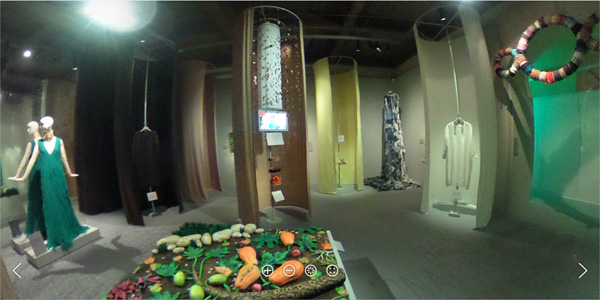
Figure 2 The exhibition Sustainable Thinking held by Ferragamo
3. Role as a center for cultivating human resources
Another important role of universities is to cultivate human resources who will serve as leaders in the future.
There is an urgent need to cultivate human resources who share awareness towards SDGs and are able to work for solutions. In terms of human resource cultivation in science and engineering fields, in addition to possessing specialized knowledge in their own field, the cultivated human resources must be able to cooperate with experts in other fields--not only other fields of science and engineering, but also the humanities and social fields--in order to utilize various kinds of knowledge across multiple academic fields. What kind of educational curriculum is necessary in order to develop such human resources?
The Leonardo Da Vinci National Museum of Science and Technology (Milan, Italy) introduced the mechanisms of scientific technologies such as radio communication and information technology, as well as the history of development behind such technologies. Moreover, the museum focused on exhibits aimed at creating recognition for how natural phenomena and various scientific technologies are related to our lives; for example, how climate change affects our lifestyle, how plastic products impact the environment, and how biodiversity is related to our lives (Figure 3). Through life experience of visitors, the museum helps visitors to recognize how our lives are built upon the fusion of knowledge from various fields. The museum also encourages visitors to consider the perspectives and ideas which are essential to the future of humanity.
In this way, in the future of university education, teachers (scientists) will need to create teams consisting of members from multiple other fields. Furthermore, teachers must provide experiences and educational opportunities which constantly make students to consider both expertise and inter-disciplinary concepts.
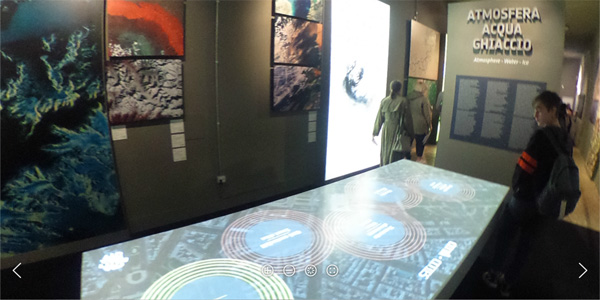
Figure 3 The Recognition and Thinking exhibit at the National Museum of Science and Technology Leonardo Da Vinci
4. Role as a center for large-scale business
When considering even students as constituents, universities correspond to a large corporation. As such, the "business" of universities has a significant impact on society and the environment. Let's consider the university business by examining the environment, diversity, and work-life balance, issues which are shared by the majority of business establishments.
In terms of environmental issues at business sites, how do universities separate and collect trash? What about recycling initiatives? The University of Western Australia has a campus so green that it seems like a botanical garden. Throughout the campus, there are boxes for sorting, disposal, and collection of trash. Furthermore, the university planted trees on vacant lots which had originally been messy garbage dumps, thus making it more mentally difficult to throw away trash. Through these initiatives, the university has worked to instill an environmentally conscious campus lifestyle among faculty, staff, and students. Today, the trees have grown large and are now a place for relaxing on the campus. Furthermore, the groves of trees have also created new value; for example, they are used for weddings held by graduates and local residents (Figure 4). As illustrated by this example, we must take a broad perspective of environmental development and work hard to create good cases which lead to the creation of new value.
Now, what about initiatives for diversity? From the viewpoint of a researcher in science and engineering, there are still few women who are active in the science, technology, engineering, and math (STEM) fields. The number in Japan is particularly small, but it is also small in Europe and Australia. However, I have had the opportunity to visit universities which have women serving as chancellors and presidents--specifically, the University of Milano-Bicocca in Italy, as well as the University of Western Australia and Curtin University in Australia. Women involved in science and engineering participate as directors who fulfill key functions at the universities. Furthermore, these universities also actively recruit women who are interested in science and engineering. Working hard to serve as a positive example of promoting diversity goes beyond the scope of management at a single university and has an extremely meaningful impact on society.
Next, let's consider initiatives for work-life balance. Even today, universities and faculties (particularly those related to science and engineering) in Japan have an aura that "burning the midnight oil is evidence of active education and research." However, at the aforementioned universities which I visited, the general rule is that facilities are closed after 6:00 PM or 8:00 PM, even at faculties related to science and engineering. In addition to strengthening security, these measures are also deeply related to the need for clearly separating work and private life. Specifically, the ideal lifestyle for people (many of which are dual-income families) is to work intensively for a short period of time and then to spend the remainder of their time with family and friends. Good examples of work-life balance have an especially profound impact on society, particularly in Japan.
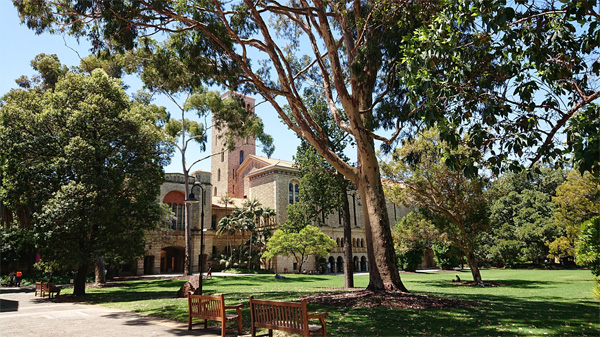
Figure 4 The campus of the University of Western Australia is surrounded by lush greenery (the result of comprehensive environmental development)
5. Closing remarks
Working to achieve SDGs is an important mission of universities that fulfill a role in creating a new future. Moreover, for university officials, it is still fresh in our minds how SDGs initiatives are included as evaluation criteria in the World University Rankings (Times Higher Education, THE). We have now gone beyond understanding of SDGs as a set of principles and liberal arts. Currently, implementation of SDGs is a standard for university evaluation and competitive rankings which are intrinsically linked to the survival (sustainability) of a university.[4] All research, educational, and business initiatives of a university are subject to evaluation.
In some ways, it seems like university officials throughout the world are too easily swayed by rankings. However, I view the introduction of such criteria as a positive element. From an even broader perspective, I intend to review the research, educational, and business initiatives of universities and to achieve new forms of social contribution through actions for SDGs.
Conversely, we must also remember that SDGs alone are not sufficient when considering our future. Indeed, respect and guarantee of basic human rights are important viewpoints which are not clearly stated in the SDGs.
Chuo University began as the Igirisu Horitsu Gakko (English Law School), an institution where students study equality under the law. Today, the social mission of our university is to implement SDGs initiatives for ensuring the continued growth of mankind while protecting the global environment, and to implement basic human rights initiatives for enabling each person to play an active role in society according to their unique characteristics.
Reference material
- Toshikazu Kato
Professor, Faculty of Science and Engineering, Chuo University
Research Interests: Kansei Engineering, Human Interface, and Kansei Robotics - Toshikazu Kato was born in Osaka. In 1986, he completed the Doctoral Program majoring in information science at the Kyoto University Graduate School of Engineering. Also in 1986, he joined the Electrotechnical Laboratory (ETL) at the Agency of Industrial Science and Technology (AIST; currently known as the National Institute of Advanced Industrial Science and Technology), which was operated by the MITI (Ministry of International Trade and Industry). He served as Chief of the Interactive Systems Laboratory in the Intelligence Systems Section at ETL. In April 1997, he became a Professor in the Faculty of Science and Engineering, Chuo University. From January 2010 to May 2018, he served as Vice-President of Chuo University (in charge of research). Since April 2015, he has served as Director of the Research Promotion Office. A leader in research and development for a user-friendly information environment in Japan. He holds his PhD in engineering. He is a member of the Japan Society of Kansei Engineering, the Institute of Electronics, Information and Communication Engineers, the Information Processing Society of Japan, the Architectural Institute of Japan, the Japan Association for Global Competency Education, the IEEE Computer Society, and the IEEE SMC.
